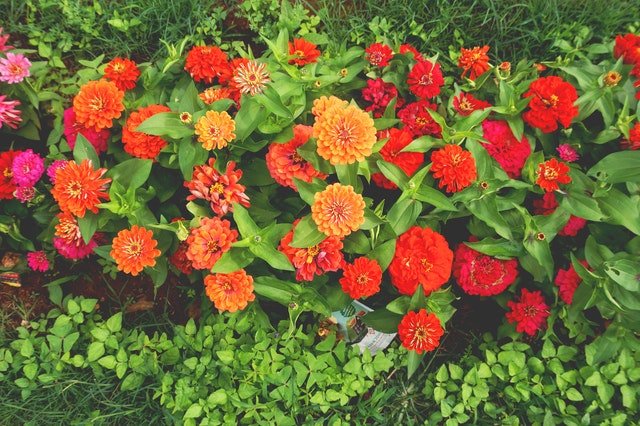Key Takeaways:
- Zoysia is a warm-season grass that spreads by rhizomes and stolons to form a dense, weed-resistant turf
- To encourage zoysia to spread more rapidly:
- Provide full sun exposure
- Mow frequently at a low height
- Water deeply and infrequently
- Use controlled-release fertilizer
- Dethatch and aerate periodically
- Overseed with zoysia seed annually
- Be patient – zoysia is slower to spread than some grasses
Table of Contents
Introduction to Zoysia Grass
Zoysia is a popular warm-season lawn grass known for its ability to stand up to heat, drought, heavy foot traffic, and a variety of other challenges. Unlike cool-season grasses, zoysiagrass thrives during the hot summer months, excelling in many southern climates.
One of the hallmark features of zoysia is its spreading growth habit. Rather than only growing upward, zoysia produces horizontal stems called rhizomes and stolons that grow along the soil surface. These allow the grass to form a dense, lush turf that crowds out weeds.
The ability of zoysia to spread is useful for:
- Quick establishment from sod, sprigs, or plugs
- Recovery from damage or wear
- Filling in bare spots
- Outcompeting weeds
However, some property owners wish their zoysia would fill in and expand more rapidly. This article covers key tips for encouraging the horizontal spread of zoysia grass.
Sun Exposure

Zoysia prefers full sun more than other grasses, requiring at least 6 or more hours of direct sunlight daily. Partial shade leads to thinning and dieback.
For faster spreading, choose lawn areas with unobstructed sun exposure. Trim back encroaching trees and shrubs to increase light levels.
Mowing Height
Mow zoysia frequently and at a low cutting height between 1-2 inches. This encourages lateral growth along the soil surface rather than upward leaf production.
During peak growing seasons, zoysia may need mowing 2-3 times weekly at the low end of its height range.
Benefits of low mowing height for zoysia:
- Promotes rhizome and stolon growth
- Reduces water and fertilizer needs
- Thickens turf density over time
- Enhances its natural resistance to weeds and disease
Watering Practices
Zoysia has good drought tolerance once established but still benefits from strategic irrigation to look its best.
- Water early in the morning to reduce evaporation loss.
- Apply about 1-1.5 inches per week during summer’s heat.
- Water infrequently but deeply to encourage deep rooting rather than frequent light sprinklings.
- Allow the soil to partially dry between waterings to stimulate spreading growth.
- Consider automatic irrigation systems to ensure consistency.
Fertilization Methods
While zoysia needs less nitrogen fertilizer than other grasses, controlled-release fertilizers support active growth.
- Use controlled-release fertilizers to feed zoysia for 6-8 weeks rather than quick nutrient spikes from soluble fertilizers.
- Follow product labels, but apply approximately 1-2 pounds of nitrogen fertilizer per 1000 square feet annually.
- Fertilize in the early summer to fuel rapid spring and summer spreading.
- Avoid over-fertilization which can damage zoysia’s heat and disease resistance.
Dethatching/Aeration
Thatch buildup and soil compaction both hinder zoysia’s expansion across the lawn by blocking stolons from rooting freely.
- Use a power rake or dethatcher in early spring before green-up.
- For heavy thatch, dethatch sections over 2-3 seasons.
- Core aerate compacted clay soils at least once annually in early fall.
- Dethatching and aerating allow rhizomes and stolons to spread into loosened soil and thin thatch layers.
Overseeding
Overseeding is sowing grass seed over an existing lawn. This helps zoysia spread by:
- Introducing new plants that expand by rhizomes and stolons.
- Filling in thin or damaged areas.
- Increasing overall density.
For best results:
- Mow lawn short before overseeding.
- Use high-quality zoysia seed once annually in spring.
- Water newly seeded areas daily until established.
- Consider using Zoysia plugs or sprigs instead for quicker fill-in.
Be Patient
While encouraging zoysia spread takes some work, have realistic expectations about its growth rate. Zoysia matures and expands more slowly than some grasses but leads to a highly durable lawn over time.
Frequently Asked Questions
Here are answers to some common questions about getting zoysia grass to spread quickly:
| Question | Answer |
|---|---|
| How long does it take zoysia to spread? | Expect 6-12 inches of lateral spread annually in ideal conditions. Full expansion takes 1-3 growing seasons. |
| What’s the fastest way to get a zoysia lawn? | Sod provides immediate zoysia coverage, while plugs spaced close together fill in within one season. Sprigs take longer to establish but are most affordable. |
| Can I seed over existing grass with zoysia? | Yes, overseeding thin turf helps zoysia fill in more rapidly than waiting for expansion alone. Mow low and water newly seeded areas to help it establish. |
| Should I fertilize zoysia to make it spread? | Applying 1-2 pounds of nitrogen fertilizer per year encourages active zoysia growth. But too much nitrogen can lead to disease problems. |
Conclusion
By following research-based turfgrass management guidelines for zoysia, you can encourage faster spreading to achieve a lush, thick lawn that outcompetes weeds and withstands heavy use. Provide optimal growing conditions through proper mowing, watering, fertilization and soil cultivation for your zoysia to fill in bare spots rapidly.
Though zoysia has a relatively slow growth rate, it remains a top choice for durable warm-season lawns. Stay patient through the maturation process and your investment of time and care will pay dividends for years to come.

Gardening is my passion and growing plants indoors has always been a stress relief for me. Grow a banana tree in my apartment once (although failed to produce bananas).






